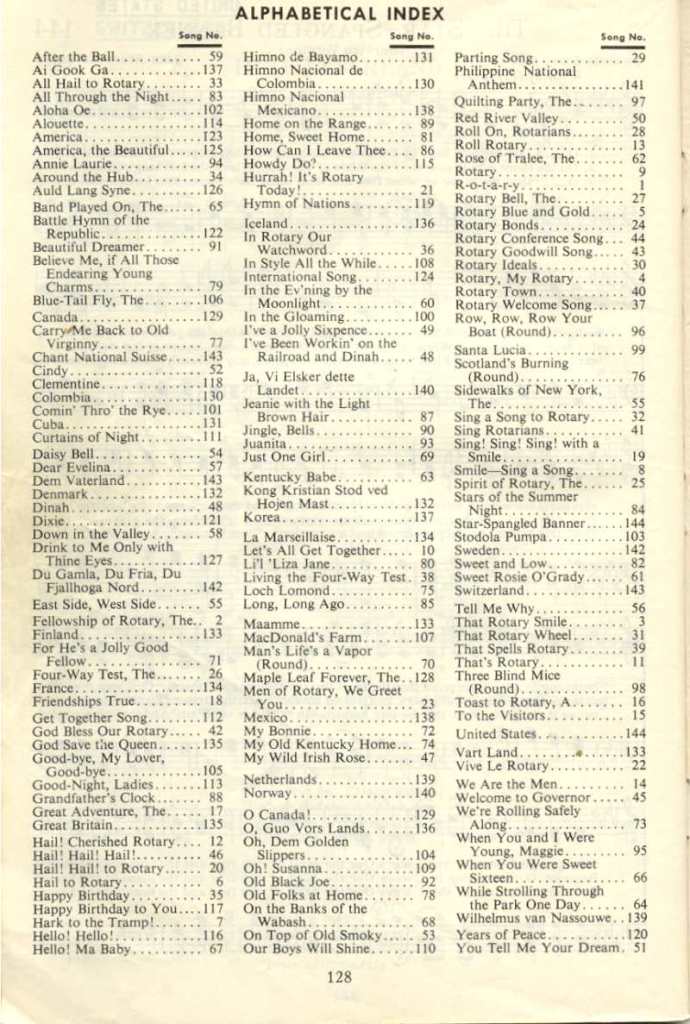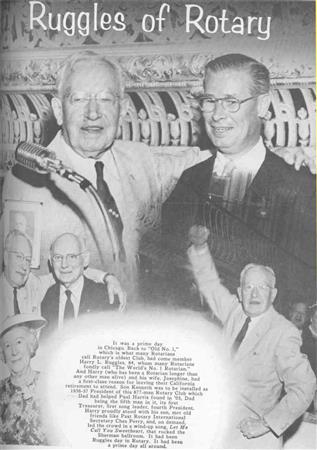From the President's Keyboard: United in Song
Posted by Jo McKay on Aug 19, 2016
From the President's Keyboard: United in Song
I thought singing in Rotary meetings was unusual.
But it's not.
Many moons ago, Robert Holman and I spoke of a meeting he made up in another group. The stand out to both of us was that they sang as part of their regular meeting. I thought that was strange.
But it’s not.
I’m a member of the Rotary Global History Fellowship (RGHF) and stumbled across Rotary singing as I researched last week’s article. What I thought was just one group’s particular format turns out to be a long-standing tradition in Rotary as a whole, and part of what unified the early Rotarians. For the old timers in our group, this article will simply be a history refresher. For the younger or newer members, here is an abbreviated timeline of song in Rotary and some tidbits on Harry Ruggles, the original singing Rotarian.
1906: Harry Ruggles, the fifth Rotarian, began the tradition of singing. Ruggles didn’t care for demeaning humor or off-color jokes. The story has it that a speaker began a story that ended in some humor that Ruggles found offensive. His response was to drown out the speaker with song. It worked. This action also began the Rotary tradition of abstaining from foul language and demeaning humor in our meetings.
The disrupting song was supposedly ‘Let Me Call You Sweetheart.”; however, that song was published 1910. Paul Harris wrote in Room 711 a more accurate story: the above anecdote is the correct, but this specific song was introduced at another meeting after it had dragged on and the members had lost focus. This song is still part of some Rotary songbooks.
1910: The first Rotary convention took place in Chicago. The convention ended with the singing of “Auld Lang Syne”, a tradition that continues to this day. Scotsman Robert Burns, who penned the lyrics, was Paul Harris’s favorite poet.
1920: Harry Ruggles published the first Rotary songbook, Songs for the Rotary Club.
1928: Paul Harris visited The Rotary Club of Glasgow (#60), Sir Harry Lauder paid him tribute with a rendition of “Auld Lang Syne”. Harris’ visit to Scotland is important: his wife, Jean Harris, nee’ Younson, was a native of Edinburgh and had emigrated with her parents to America.
1950: Vintage Rotary songbook, pictured here. The list includes both popular ad Rotary-specific music.



1972: The International Fellowship of Rotary Musicians formed, to “promote and encourage the use and appreciation of music in Rotary clubs by Rotarians in our society and, thereby, to encourage world-understanding."
As I researched and wrote this week’s blurb, I was struck by the fact that Harry Ruggles used singing to energize and unify his club. He also wrote that Ruggles was known as the ‘new member getter’. It’s no coincidence that the person who lifted the club’s spirits and did so much to keep it unified was the prime mover in growing his club.
As we move Rotary into the 21st century, we must consistently ask ourselves how we will stay unified in our clubs and Rotary International’s mission. Our demographics have changed dramatically since our inception and our projects have expanded in scope and breadth. We only accomplish our goals if we continue to grow our membership and work together as one body. Singing is one way to create unity; it is up to each club as to how we will stay unified and focused on the purpose of Rotary.
Singing still takes place in many Rotary clubs across America. Fort Worth East sings regularly and will demonstrate songs in Rotary at the All Clubs Meeting at the Downtown Rotary Club on Sept. 30. I hope you will all join me at that meeting. It is a rare opportunity to see all the clubs at once and stand unified as Rotarians of Fort Worth.
Your servant-leader,
Jo
